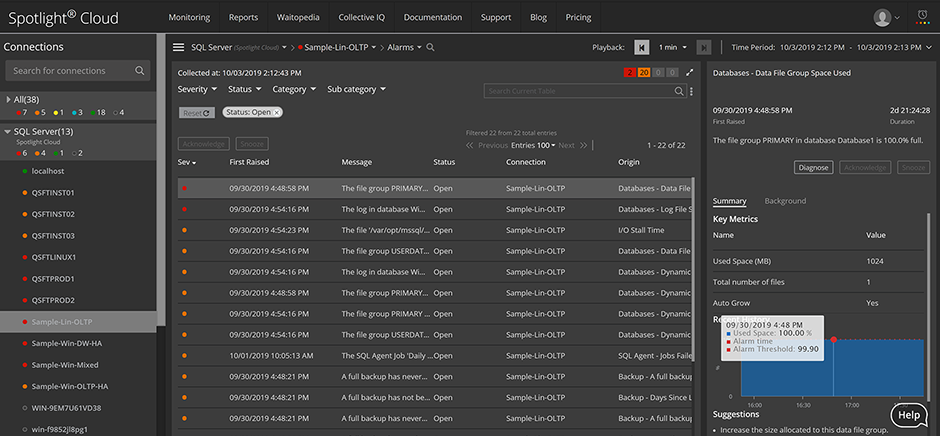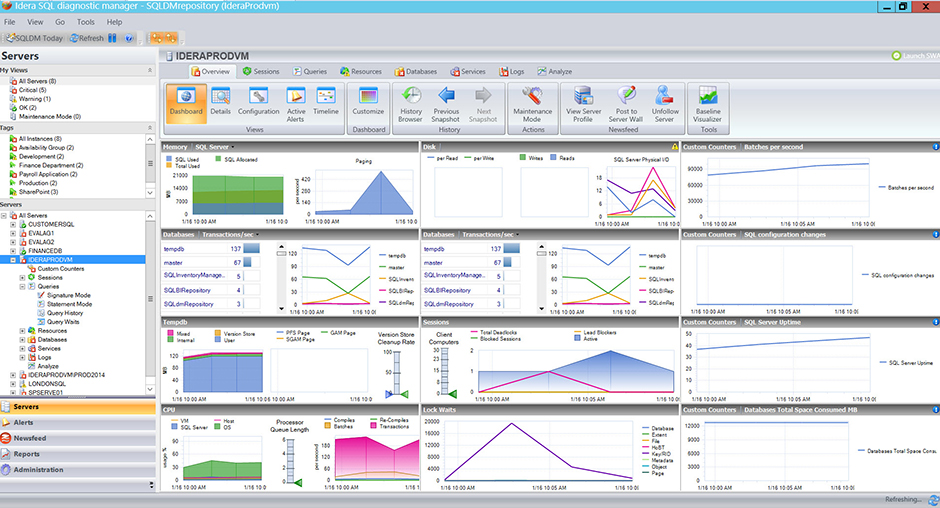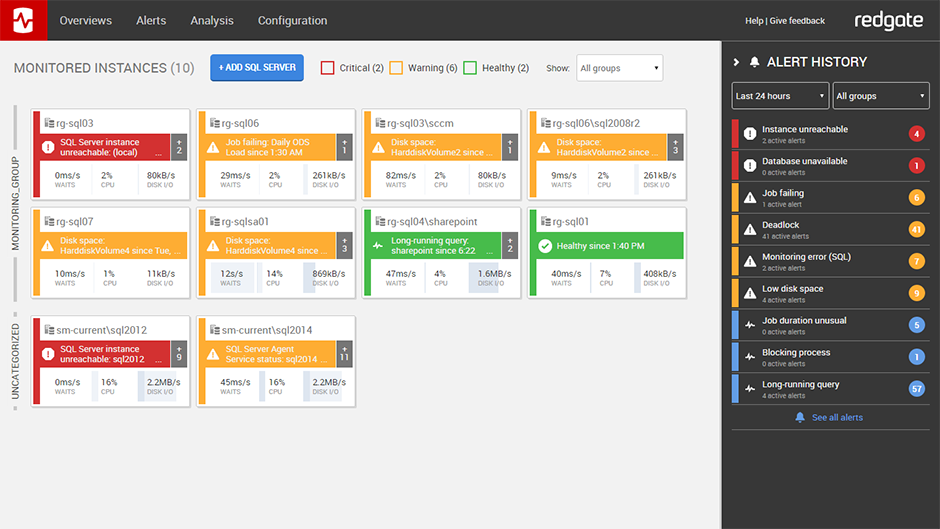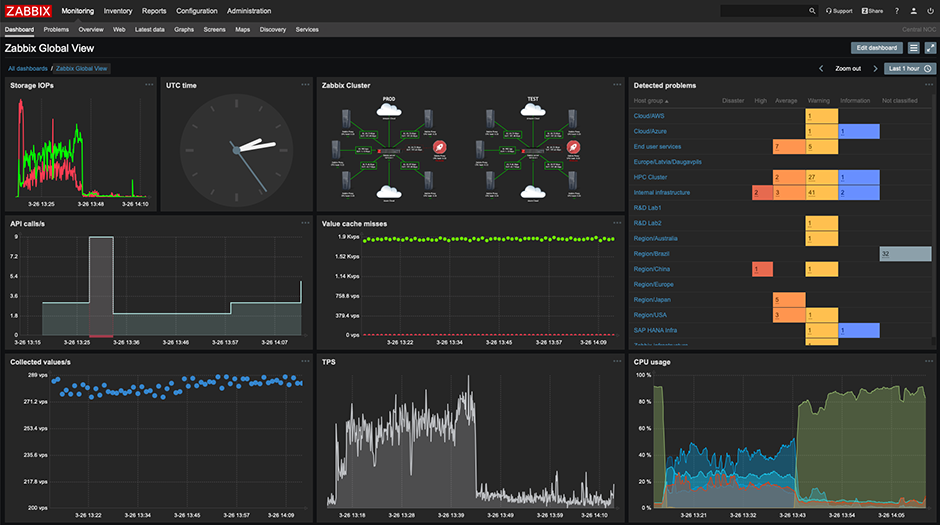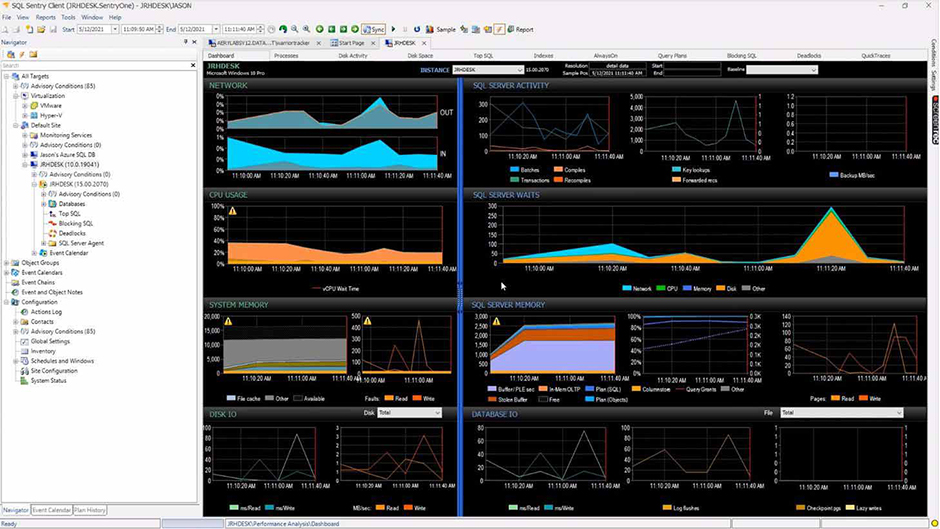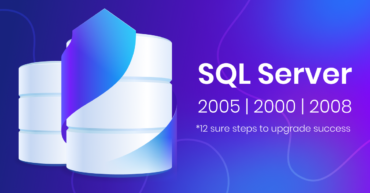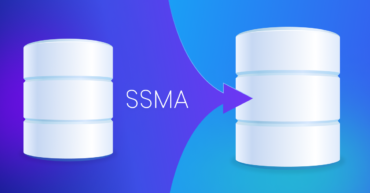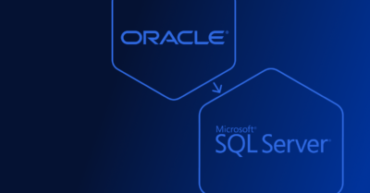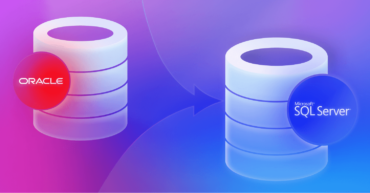It’s no secret that a modern world runs on data. This essential asset is stored in databases or data stores. And keeping such databases or data stores healthy is vital in the digital era we live in. It is also no secret that database issues can take down entire systems and cost businesses many thousands of dollars per hour.
The ABCloudz team has years of experience supporting customer databases and delivering database services. A couple of our customers recently requested that we research database monitoring tools available in the market. They also asked for a recommendation on which tool would fit their SQL Server monitoring needs the most. We are happy to share with you the results of this research conducted by our database team.
Why use database monitoring tools?
To optimize data load, set thresholds, and prevent system failures at an early stage, companies need to keep track of their databases. That’s when monitoring tools come in handy. With their convenient dashboards, detailed description of alerts, and integration with other systems such as Slack, ServiceNow, and SolarWinds, monitoring tools deliver many benefits. Some of the most valuable benefits include:
- The ability to keep track of the state of your database. Therefore,Keeping track of its state helps you maintain it more efficiently. You also have the capability to and have much higher chances to anticipate the problem before it actually occurs.
- A more effective and precise evaluation of your system’s capacity.
- Improved detection of hidden issues affecting the productivity of your infrastructure.
- The ability to troubleshoot a problem once it occurs and fix it before it affects the end-user.
- Enhanced database analytics that are usually supported with detailed visualization.
While choosing a database monitoring tool for your project, make sure to consider the following:
- Databases that are compatible with this tool
- Key features of the monitoring tool
- Possibilities for integration with other software used for DB management
- Integration support provided by a vendor or a third party
- Price and availability of a free version or free trial.
Pay close attention to these parameters to find a cost-efficient solution that fits your existing DB management processes and enables you to meet your business needs.
Comparison of SQL Server Monitoring Tools
In our experience, the most popular and useful SQL Server monitoring tools that merit your attention are Spotlight Cloud, SQL Diagnostic Manager, SQL Monitor, Zabbix, and SQL Sentry. Check them out by scrolling through this large table below for the basic information on each of the tools on this list.
| Category | Spotlight Cloud | SQL Diagnostic Manager | SQL Monitor | Zabbix | SQL Sentry |
|---|---|---|---|---|---|
| General information | |||||
| Open source/free | — | — | — | Yes | — |
| Platform | Cloud | Windows | Windows | Cloud/On-prem,*nix | Windows |
| Vendor | Quest | Idera | Red Gate | Zabbix | SolarWinds |
| Works with cloud | Yes | Yes | Yes | Yes | Yes |
| Annual Price Per Instance | up to 2000 $ (depends on volume) | 997$ | 876 $ | Free | 1 180 € |
| Works with cloud | — | Yes | — | Yes | Yes |
| Monitored databases | |||||
| SQL Server | Yes | Yes | Yes | Yes | Yes |
| SSAS | Yes | Yes | — | — | Yes |
| SSIS | — | — | — | — | Yes |
| AzureSQL DB | Yes | Yes | Yes | Limited, via ODBC | Yes |
| Azure Synapse | — | — | — | — | Yes |
| MySQL | Yes | Yes | — | Yes | — |
| Oracle | — | Yes | — | Yes | — |
| MariaDB | Yes | Yes | — | Yes | — |
| DB2 | — | Yes | — | Yes | — |
| PostgreSQL | — | — | — | Yes | — |
| MongoDB | — | — | — | Yes | — |
| Repository database | |||||
| SQL Server | Yes | Yes | Yes | Yes | Yes |
| Oracle | — | Yes | — | Yes | — |
| AzureSQL DB | Yes | — | — | — | — |
| MySQL | — | — | — | Yes | — |
| PostgreSQL | — | — | — | Yes | — |
| MariaDB | Yes | — | — | — | — |
| Features | |||||
| Windows performance counters | Yes | Yes | — | Yes | Yes |
| SQL Server performance counters | Yes | Yes | Yes | Yes | Yes |
| Baseline collection | Yes | Yes | Yes | Yes | Yes |
| Capacity forecast | Yes | Yes | Yes | Yes | Yes |
| Real-time and historic monitoring | Yes | Yes | Yes | Yes | Yes |
| Instance and DB’s config monitoring | Yes | Yes | Yes | — | Yes |
| Customizable dashboard | Yes | Yes | Yes | Yes | Yes |
| Availability Groups Monitoring | Yes | Yes | Yes | Yes | Yes |
| License management & control | Yes | — | Yes | — | Yes |
| Blocking and deadlock analysis | Yes | Yes | Yes | Yes | Yes |
| Workload and index advisors / recommendations | Yes | Yes | Yes | — | Yes |
| Anomaly Detection | Yes | Yes | Yes | — | Yes |
| Security monitoring | Yes | Yes | Yes | — | Yes |
| SQL Server Agent job monitoring | Yes | Yes | Yes | Yes | Yes |
| SQL Server Agent job anomaly detection | Yes | Yes | Yes | — | Yes |
| High severity errors monitoring | Yes | Yes | Yes | Yes | Yes |
| TempDB uage tracking | Yes | Yes | Yes | — | Yes |
| Setup client agent | Depends | Yes | — | Depends | — |
| Has trial / Limits | 30-day trial | 14-day trial | 28-day trial | Free | 14-day trial |
| Integration | |||||
| Slack/Teams notifications | Yes | — | Yes | Yes | Yes |
| Mail notifications | Yes | Yes | Yes | Yes | Yes |
| ServiceNow integration | Yes | — | Yes | Yes | Yes |
| SolarWinds integration | — | — | — | — | Yes |
| Implementation, tuning | |||||
| Vendor / In-house | Vendor | Vendor | Vendor | In-house | Vendor |
| Support by | |||||
| Vendor / In-house | Vendor | Vendor | Vendor | Vendor / In-house | Vendor |
| Comments | Good functionality and granularity out-of-the-box. Price depends on volume and monitoring features. | Good functionality and granularity out-of-the-box | Good functionality and granularity out-of-the-box | Internal implementation and constant tuning of metrics/ alerts/ collectors/ triggers adjusting the solution to the business needs | Best functionality and granularity out-of-the-box |
| Recommended by ODM team | Yes | Yes |
Now, let’s proceed with more specific information on these tools, as well as their advantages and disadvantages.
Spotlight Cloud

Spotlight Cloud is a cloud monitoring platform developed by Quest.
Pros:
- Windows server monitoring out-of-the-box.
- Good functionality and granularity.
- Built-in best practices and security analyzer.
- Workload analysis drill-down.
Cons:
- Mobile applications often lose communications with a gateway.
- Pure Always On availability group (AOAG) monitoring, which implies reduced flexibility.
- It can cost up to $2000 per month.
- Doesn’t provide enterprise monitoring.
Overall: Spotlight Cloud is an intuitive, customizable SQL Server Monitoring and tuning tool powered by the cloud. However, it won’t fit all use cases because of its high price and limited flexibility.
SQL Diagnostic Manager

SQL Diagnostic Manager is a Windows platform tool powered by Idera.
Pros:
- SQL Diagnostic Manager provides an improved control over database instances, useful baselines, improved performance, and bottleneck control.
- It monitors physical, virtual, and cloud environments.
- It tracks queries and plans for fixing blocks and locks.
- SQL Server Agent jobs anomaly detection.
Cons:
- It requires SQL Server instances (Standard or Enterprise edition).
- ServiceNow integration out-of-the-box is not available.
- Poor performance of storage forecast reports.
- Overloaded dashboard doesn’t focus on instances with issues.
- Slow agent client.
Overall: SQL Diagnostic Manager is a decent platform in terms of its functionality. However, it doesn’t always perform well and has some issues with integration.
SQL Monitor

SQL Monitor is a Windows platform powered by RedGate.
Pros:
- It enables you to manage your entire SQL Server estate, including on-prem and cloud databases, from a single dashboard.
- It gives you a focused set of performance metrics that quickly help you pinpoint the cause of any database issues.
- SQL Monitor includes multiple tools that make your life monitoring SQL servers and SQL databases easier.
- It provides advanced reporting functionalities that enable you to share reports about your servers and company health.
Cons:
- SQL Monitor doesn’t fit as a solution for complex enterprise monitoring purpose.
- It works with a limited number of databases.
- As it is an out-of-the-box solution managed by the vendor, SQL Monitor provides limited flexibility.
Overall: SQL Monitor is a feature-packed and reliable solution. However, it doesn’t provide enough functionality for enterprise-level monitoring.
Zabbix

Zabbix is a monitoring tool that monitors any kind of database and works with on-premises or in the cloud. The tool is named after the company that provides it.
Pros:
- Zabbix is an extensible simple platform for monitoring Windows hosts, SQL Server, and many more, which allows quick setup metric gathering and alerts.
- It provides some open-source templates and one official template for SQL Server monitoring which contains a lot of metrics and alerts and some discovery rules.
- Zabbix allows creating additional metrics gathering from the database with custom queries through ODBC.
- The tool allows for creation of dashboards with required metrics graphs.
- Zabbix enables you to set up notifications through different channels (email, Slack, Telegram, etc.).
The tool can be used as an inventory system.
Cons:
- SQL Server templates are not very mature and there is no single standard template. This means additional work on setup monitoring, mirroring, log shipping, and some other tasks.
- It may have some issues with storing and querying text data.
- Zabbix lacks ready templates for monitoring SQL Server as a service like Azure SQL database, Azure Managed Instance, Amazon RDS for SQL Server.
Overall: Zabbix is a mature open-source solution for infrastructure monitoring. It can monitor almost everything with its out-of-the-box and open-source templates. It may lose to specialized commercial systems in such aspects of SQL Server monitoring as queries monitoring, always-on monitoring, session information gathering, replication, tables/index growth, database health checks, backup monitoring, inventory, and index advice. However, Zabbix is also notable for its excellent customizability. Therefore, there’s no monitoring template you can’t create in Zabbix. The only thing is that creating it may take some time and effort.
SQL Sentry

SQL Sentry is based on the Windows platform and is powered by SolarWinds.
Pros:
- The tool provides user-friendly and detailed dashboards that bring attention directly to problem areas.
- SQL Sentry provides an extremely customizable alert so that you won’t receive a lot of useless alerts.
- Sentry’s Top SQL interface is extremely useful for identifying poorly performing queries by resource consumption.
- SQL Sentry provides a historical analysis of performance counters that enable you to go back in time or over a time range to see what was happening to the server.
- SentryOne provides a great blocking page to help understand a blocking chain quickly.
- The tool provides SQL Server Deadlock Analysis that helps DBAs find and fix SQL Server deadlocks.
Cons:
- While creating Advisory Conditions is extremely flexible it can be a bit challenging to get everything correct.
- Summary reports get only total base information, while there may be a lack of more detailed information.
- SQL Sentry doesn’t provide enough documentation and information about some errors and issues related to SentryOne.
- The tool sometimes fails to capture execution plans.
Overall: SQL Sentry is a feature-packed SQL Server monitoring tool that fits many situations and requirements. It has some limitations and may be challenging to master. However, we recommend it as one of the most useful SQL Server monitoring tools.
Choosing a tool that fits your needs
All the above-mentioned monitoring technologies have their pros and cons. The choice of the right instrument depends on the monitoring type required, specific database features, and the specific details of events that should be monitored.
If you want to analyze a specific database with attention to the slightest detail, Spotlight and SQL Monitor are decent solutions. However, if you need a detailed overview of an enterprise system, we strongly recommend you apply SQL Sentry and Zabbix. This may require additional effort and expense on monitoring tool configuration but the result is worth it because these monitoring tools, especially Zabbix, provide excellent customizability and flexibility. Therefore, you can adapt them to your specific system needs and efficiently monitor only those databases and database processes that are vital to you.
In conclusion
The ABCloudz team of DB specialists has rich experience in building efficient database monitoring systems for our clients. We have strong expertise in some of the monitoring tools mentioned in this list and are experts in setting up and configuring Zabbix for client-specific needs.
Our team’s skills are not limited to ready-made solutions. We can deliver a customizable monitoring system adapted to your goals and concerns too. Contact us for a thorough analysis of your database system and get to know how we can make you avoid emergencies with state-of-the-art database monitoring solutions.
